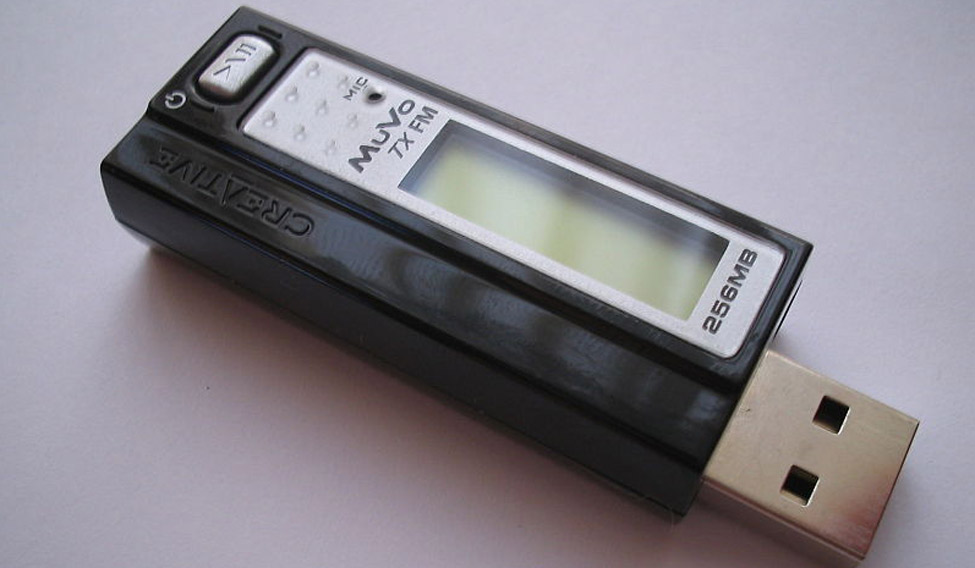“If music be the food of love, play on, give me excess of it...” says Duke Orsino in Shakespeare's Twelfth Night. The Bard was not to know that almost four centuries later, technology would create the tools for people to enjoy a glorious excess of music—all they could store for a negligible price.
Consider the scenario twenty-five years ago: The Sony Walkman had been around for more than a decade, launching the era of portable music. But the cassette has its limitations: Tapes held on average about 45 minutes of music. And they snarled and broke. And sometimes self-destructed if placed in heavy electrical fields. Then came the CD—and Walkman became Diskman.
This was a much more reliable system—but too pricey for the aam janatha. And greedy record companies limited the capacity of a CD to the same 45 minutes—though in theory it could accommodate 4 times that much music.
The time was ripe for a major disruption in recorded music—and it came from an unlikely place—the Fraunhofer Institute for Integrated Circuits in Germany working on technology that was then under development at the University of Nuremberg. Between 1987 and 1992, researchers honed a new standard for digitising and compressing audio files that occupied a tenth of the space of all earlier standards. When international standards organisations finally promulgated the standard, it was called Motion Picture Export Group, standard 3—MP3 in short.
And it revolutionised—and democratised—music as nothing else in earlier history. You didn't need a tape or disk mechanism. All you needed was a matchbox-sized circuit board, a small semiconductor storage and either headphones or a pair of speakers. The MP3 player was born.
Sony quickly reinvented the Walkman to store in MP3 format. Dozens of other makers shamelessly cloned its design. But it was the Apple iPod which became the defining design for the MP3 player in October 2011. Its successor, the iPod Nano, weighed just 30 grams. Its 32 GB flash drive could store typically some 7,000 MP3 tracks ( music tracks in the West typically lasted three minutes and took about 4.5 megabytes of memory). The MP3 player was a great leveler: It could be had at all price points—from Rs 300 for an unbranded piece to Rs 15,000 and more for an iPod or a Bose.
Now here was the cool thing! If you could store and transfer music files as software, you could also copy and exchange. Millions converted their disks and tapes into MP3 files—and put it on the Web as a service. While record companies gnashed their teeth at the piracy, lay music fans merrily copied what they liked and carried ' an excess of it'—everywhere. MP3 players soon fitted on a keychain—and when mobile phones proliferated in the first decade of the new century, every handset was by default, an MP3 player.
But audio experts never liked this format. They grumbled that in compressing the music, the MP3 codec or standard, messed it up, squeezing the very high and very low notes. That was to be expected, because the original mandate for the developers of MP3 was that it should be carried on a telephone line.
But who cared? We the baby boomers? Nah! The millennials? Get serious Man! We were not looking for concert quality—only time pass. And that, MP3 delivered, gloriously, CHEAPLY.
But technology is a moving goalpost. As the Fraunhoffer institute explained a few days ago, when it announced that it was terminating the licensing of MP3: "There are more efficient audio codecs with advanced features available today—such as the AAC family or in the future, MPEG-H. Those can deliver more features and a higher audio quality at much lower bitrates compared to MP3." In fact for some time now AAC has been the main format for services such as iTunes and all YouTube files.
That does not mean the death of your player or your MP3 collection. Players will continue to play ... but new and upcoming music players, Bluetooth speakers, smartphones and the like will slowly move to AAC and MPEG-H and stop supporting the MP3 standard. USB has already moved to Type C but how many of us have Type C on our phones? A similar situation will play out with MP3... I am guessing we can still play our beloved music files for at least five years more and still be supported .
One understands why the industry may say "RIP, MP3". The rest of us must be allowed to say our alvida to our own time table and in our own way. Kamaal ki cheez, yaar!




